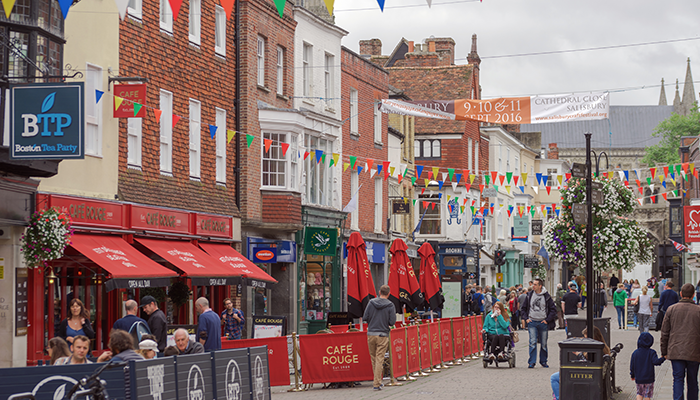
Two stories have dominated the headlines over the past couple of months. Brexit, of course, and the fate of the high street. Like Brexit, stories about the high street tend to focus on, at best, an upcoming period of uncertainty and, at worst, terminal decline. Positive stories about our town centres are few and far between. High streets, quite simply, are not the bustling hearts of their communities that they once were.
There is no shortage of fingers pointing to where the blame for this lies. Maybe it’s the internet, which has caused a shift of 20% of retail sales from in-store to online. Others blame the government and business rates that generate more revenue for the Treasury than in many of our neighbouring countries, like France, Holland and the Netherlands. Greedy landlords have also been singled out for refusing to drop their rents despite a general acceptance that we have too much retail property on our high streets. Finally, with over 400 major firms going to the wall in the past decade, some argue it is the retail sector’s fault. Many retailers have resisted change and failed to be attractive to the 21st century consumer.
The answer, thought, is the high street problem is a result of all of these factors – and more. Our research highlighted over 200 factors that affect the vitality and viability of town centres. It is, however, a complex puzzle. If every factor was a tile on a Rubik’s Cube then we would need a Rubik’s Cube of 5 x 5 x 5 just to show them all. And, just like a scrambled Rubik’s Cube, each individual town needs to find its own solution through a unique set of moves.
If we want to unlock the potential of places then we have to accept that people make places
The trouble is, we have not understood the problem in a place-based way. Instead, for the last 40 years or so, we have been serving up the same solution. Retail – shopping centres – more retail – more shopping centres. This approach has standardised our centres. In the words of the Distressed Retail Property Taskforce, “retail has throttled out other uses”. The one-size-fits all approach has been oblivious to the causes of problems and ignored local initiatives that are actually successful in solving them.
By analysing footfall data we believe only about a quarter of town centres are still anchored by retail. The towns responding well are the ones that really understand their catchment, the function they serve and, really importantly, their relationship with other centres. They are developing their own set of moves, and they know that solving the high street puzzle is a combination of repositioning, reinventing, rebranding and restructuring. All of these processes need buy-in from a wide group of people, and a combination of leaders and do-ers. They are processes, not projects. They do not have start and finish dates. They are ongoing commitments.
Town centre decision-making needs to become less myopic and more porous. Truly understanding the issues and coming up with good solutions has to involve a much wider group of stakeholders. Place leadership is a fluid concept – it ebbs and flows around individuals, organisations and partnerships.
If we want to unlock the potential of places then we have to accept that people make places: the council, the business owners, the residents, the employees, the visitors, the landlords, the young, the old, the in-between, the rich, the poor, everybody. We simply have to get much better at collaborative working.
Cathy Parker is taking part in a panel discussion on Regenerating Place at the IED’s 2018 annual conference Mind the Gap – Productivity, Place and People on 6 December




















